Every company has a line up of products available, Ortofon is no exception. We all look at theses different products and wonder what sets them apart from each other. Is the Blue better than the Red 2M. We all hope that the price jump from one to the next means performance gains as well. We put two of the most popular carts on the market head to head in the Ortofon Red Vs Blue show down. Both are Moving Magnet carts, and very similar. This more than anything can make the choice hard. The Red Retails for around $100 depending on your area, and the Blue around $240 again depending on area, is that difference actually worth it? Let’s get into the Ortofon Red vs Blue.

The differences on Paper
The Ortofon 2M Red and Blue are very similar on paper. The key difference between them is the stylus. The Red has an elliptical diamond stylus and the Blue has a nude elliptical diamond stylus. What does that mean though, seems like a large price jump for a literally tiny difference. Ortofon has a really good break down of the differences between the two.

a. Nude diamond. The stylus is a whole diamond, specially shaped and glued or fastened to the
cantilever.
b. Tipped diamond. Here, a stylus tip of diamond is mounted on a metal shank.
It is usually made of diamond – the hardest material known – to give it maximum durability. However, the fact that it is of diamond is not sufficient in itself, for its construction and shape are also crucial factors in sound quality. Many less inexpensive Hi-Fi cartridges use a so-called “tipped” diamond, where the diamond tip is mounted on a metal shank. However, such a shank may increase the stylus tip mass and thus impair
the cartridge’s transient reproduction, in comparison with a cartridge that uses a nude, untipped diamond.
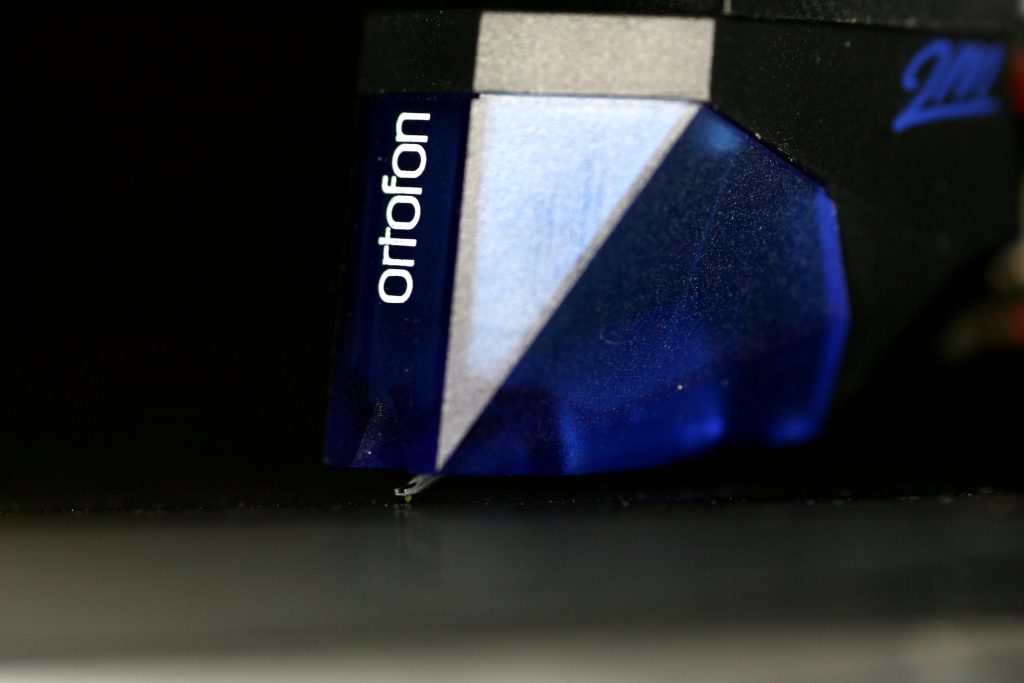
Red Vs Blue Specs
Red on the left and Blue on the Right
| Output voltage at 1000 Hz, 5cm/sec. – 5.5 mV | Output voltage at 1000 Hz, 5cm/sec. – 5.5 mV |
| Channel balance at 1 kHz – 1.5 dB | Channel balance at 1 kHz – 1.5 dB |
| Channel separation at 1 kHz – 22 dB | Channel separation at 1 kHz – 25 dB |
| Channel separation at 15 kHz – 15 dB | Channel separation at 15 kHz – 15 dB |
| Frequency range at – 3dB – 20-22.000 Hz | Frequency range at – 3dB – 20-25.000 Hz |
| Frequency response – 20-20.000 Hz + 3 / – 1 dB | Frequency response – 20-20.000 Hz + 2 / – 1 dB |
| Tracking ability at 315Hz at recommended tracking force – 70 µm | Tracking ability at 315Hz at recommended tracking force – 80 µm |
| Compliance, dynamic, lateral – 20 µm/mN | Compliance, dynamic, lateral – 20 µm/mN |
| Stylus type – Elliptical | Stylus type – Nude Elliptical |
| Stylus tip radius – r/R 8/18 µm | Stylus tip radius – r/R 8/18 µm |
| Tracking force range – 1.6-2.0 g (16-20 mN) | Tracking force range – 1.6-2.0 g (16-20 mN) |
| Tracking force, recommended – 1.8 g (18 mN) | Tracking force, recommended – 1.8 g (18 mN) |
| Tracking angle – 20° | Tracking angle – 20° |
| Internal impedance, DC resistance – 1.3 kOhm | Internal impedance, DC resistance – 1.3 kOhm |
| Internal inductance – 700 mH | Internal inductance – 700 mH |
| Recommended load resistance – 47 kOhm | Recommended load resistance – 47 kOhm |
| Recommended load capacitance – 150-300 pF | Recommended load capacitance – 150-300 pF |
| Cartridge colour, body/stylus – Black/Red | Cartridge colour, body/stylus – Black/Blue |
| 2M standard and 2M Verso cartridges weight – 7.2 g | Cartridge weight – 7.2 g |
| 2M PnP MkII cartridge with integrated headshell weight – 20 g | 2M PnP MkII cartridge with integrated headshell weight – 20 g |
| 2M PnP MkII cartridge with integrated headshell length – 52 mm | 2M PnP MkII cartridge with integrated headshell length – 52 mm |
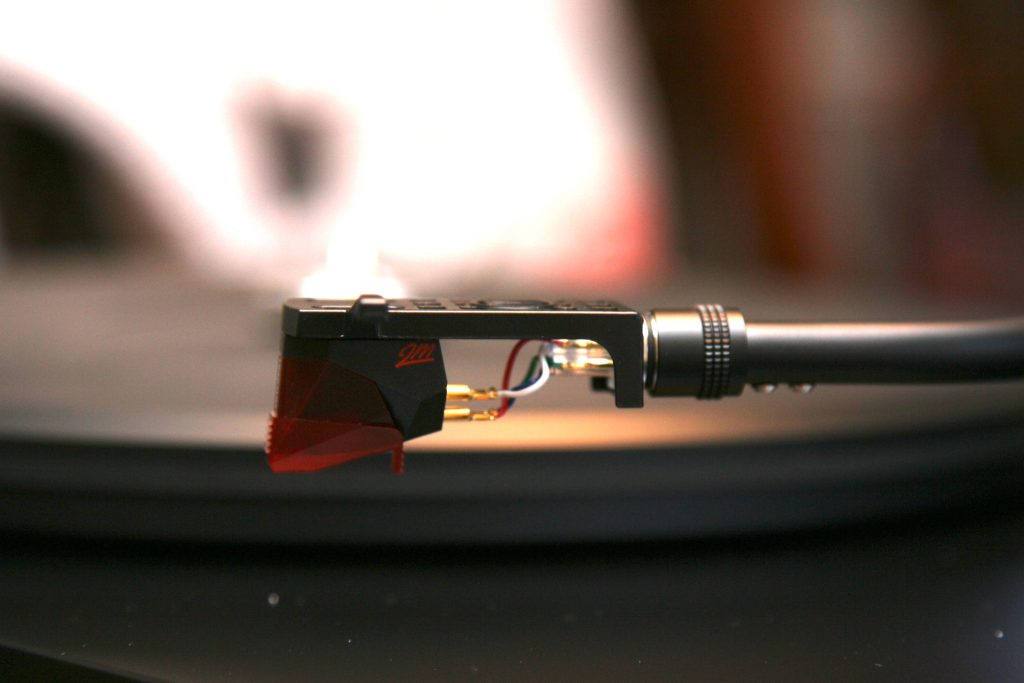
Ortofon Red vs Blue Tests
We listened to a variety of records just to get an idea of what we did or didn’t like about each cart. To be honest it’s hard to think of anything not to like about either at their respective prices. We also hooked up a mic to my macbook and used a frequency analyzer program to get an idea of how well they perform. We took screenshots of each cart at the same point in the respective songs. First We listened to Tchaikovsky, a favorite of the Hifi Chicken. The next test was Red Hot Chili Peppers, “Death of a Martian”. We wanted test these carts with wildly different music to see the possibilities. Some carts available may be equally good in terms of performance but not necessarily the best for a specific genre of music. The Blue and red both sound good with a variety of sound signatures. They both avoid being hyper specialized, meaning they are easy to use. You won’t have to worry about changing out carts when you want to listen to something else. Though most folks listening on that level have multiple arms or tables.
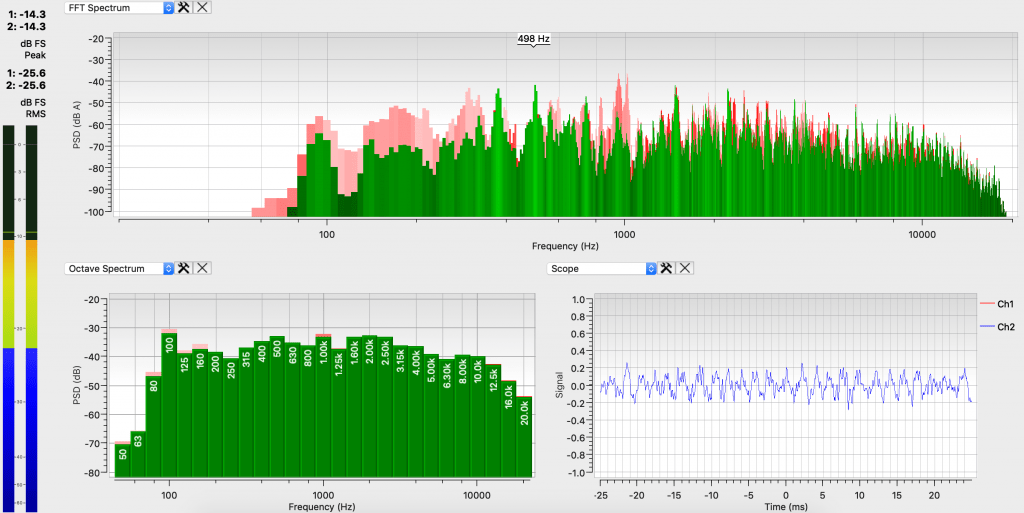
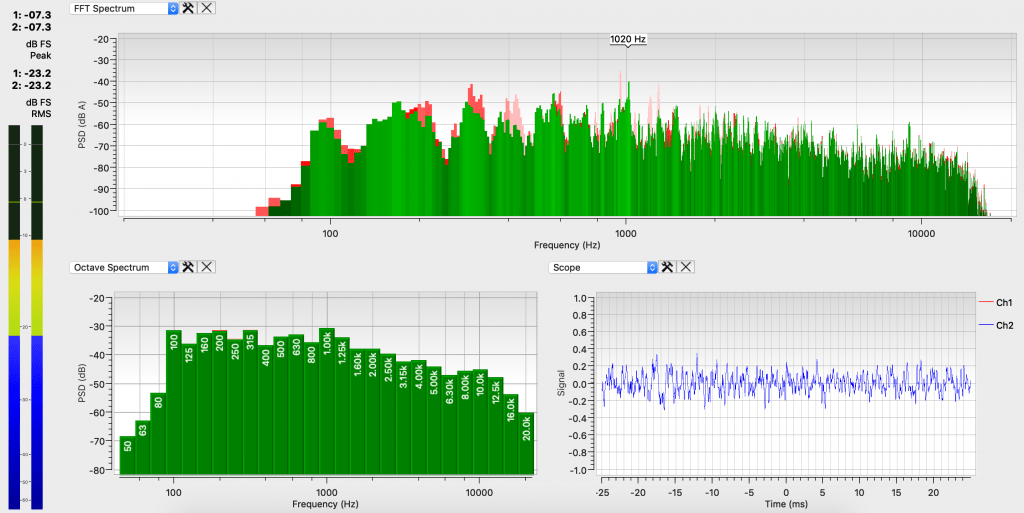
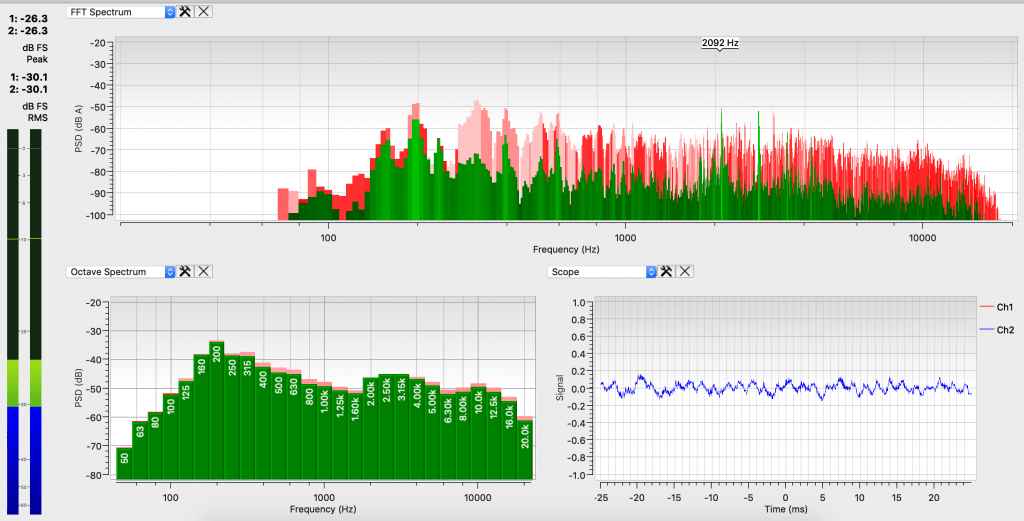
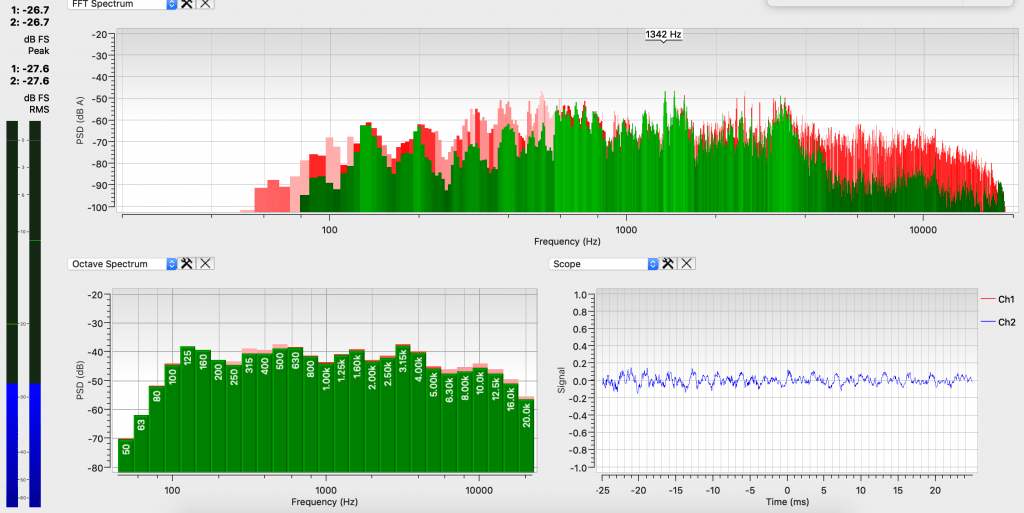
As we can see the 2M Blue has much more body with both of the music samples. There is more coverage across the frequency range. This is quite audible, as well. The detail difference is obvious, as is the channel separation. The Blue is better in every way than the Red. That is not to say the red is bad. If you have a budget to stick to it will be a great upgrade for most entry level tables. I recommend it wholeheartedly. The best part is if you want a Blue down the road you can buy just the stylus and put it on the red cart, saving some money in the meantime. I will say that the Red sounded better to my ear when listening to rock music, I can’t really say why. It sounded more natural to my ear. There is something enjoyable about the rawness of rock music, the Red seemed to be to play well into this sound. If rock and roll a primary genre for you, you may prefer the red. Classical on the other hand benefited massively from the added detail of the Blue. You can hear each instrument and their place in the sound stage. For me overall I will stick with the blue, while it may not be my perfect cart for Rock and Roll, I prefer jazz and classical with occasional rock so the benefits in those areas are a paramount.
Is the Blue worth the green
It is hard to say exactly, as with anything there is a limit to how much difference your system will bring out of the Carts. Both carts will come with the same accessories, such as the 2 sets of screws, manual and brush. My best advice if you are looking to choose is if you have an entry level system, I recommend the Red. It is a capable cart that won’t be performing on a level the rest of your system can not keep up with. If you have a mid level set up the blue is a fantastic daily spinner cart. It has detail, reliability and a very reasonable price. If you are running a top end set up you may want to look past the Blue at something from Ortofon’s upper end. One of the best parts of this hobby is how easy it is to upgrade over time. Ortofon is there with you every step of the way, from entry level to the top of the top. If you are looking to upgrade the supplied cart on your turntable then you may do well to check out either the Red or Blue. Though if you have the extra cash and a good table it is worth springing for the Blue Cart.

Testing Gear:
- Marantz SR7009 Preamp
- Nakamichi PA5 Stasis Power Amp
- Audioquest interconnect for amps
- Audio-Technica LP7 with stock cables
- GearIt Speaker cables
- Martin Logan LX16 SPeakers
- OEM Power Cables
- Ortofon 2M Red
- Ortofon 2M Blue
Disclaimer
Ortofon Provided Hifi Chicken with both Blue and Red Carts. No review is paid for nor directly sponsored as a means to keep them as objective as possible. As always do not just take our word on reviews, they are means of guiding you in the right direction. When possible audition products at your local audio shop before purchasing. We cannot guarantee that this is the best option for you, though one of the best to consider as an addition to your set up.
To find a retailer near you head over to Ortofon’s website. https://www.ortofon.com/where-to-buy/

